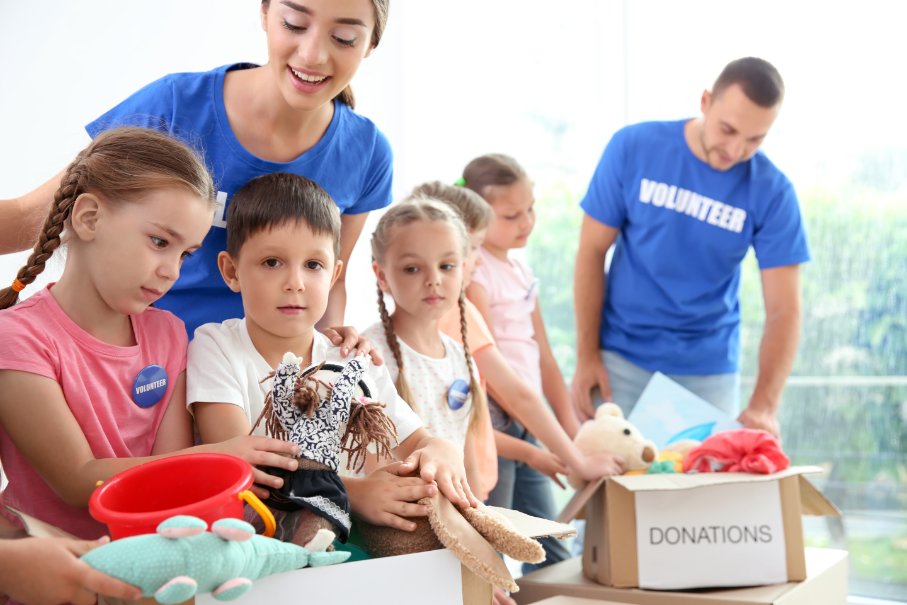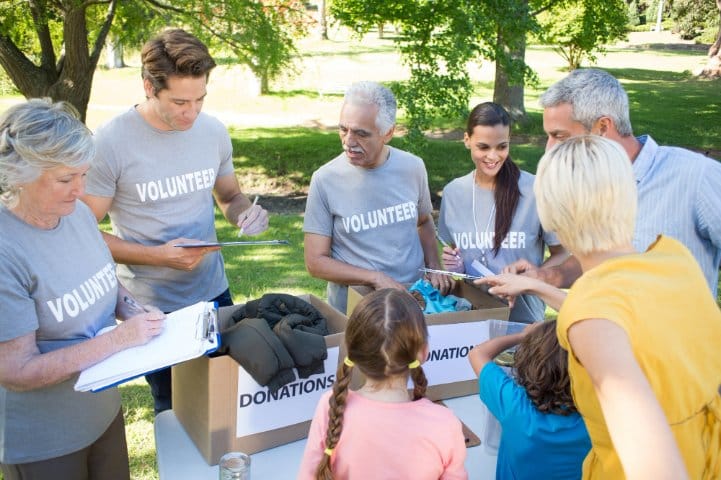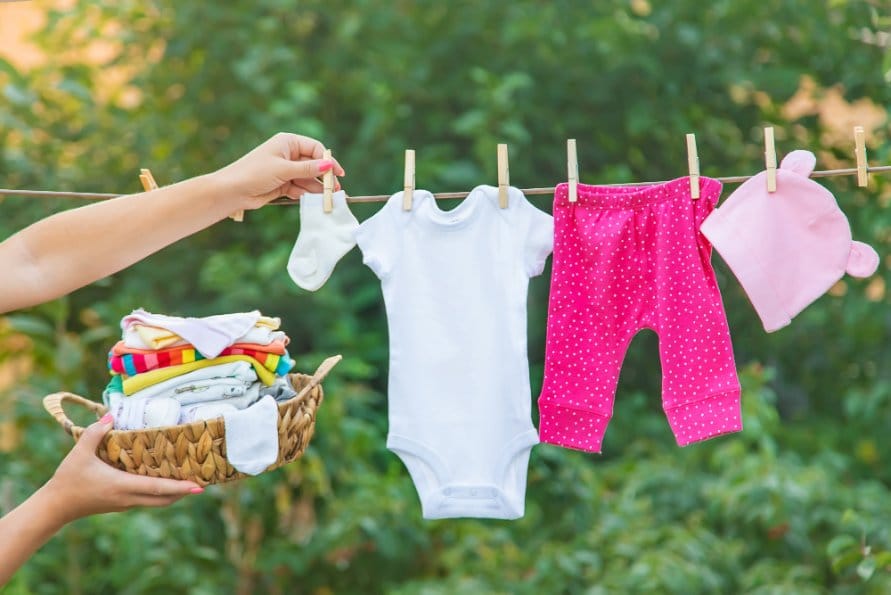Turn Your Child’s Outgrown Clothes Into Community Impact – A Step-by-Step Guide to Local Donation Centers, Tax Benefits, and Preparation Tips
Quick Answer: You can donate toddler clothes to local organizations like Goodwill, Salvation Army, homeless shelters, domestic violence shelters, and children’s charities. Many offer pickup services, tax receipts, and direct community impact. This guide shows you exactly where to go and how to prepare your donations for maximum benefit.
of people who search “near me” visit a business within one day
increase in demand for children’s clothing donations in 2024
of smartphone users take action after local searches
Table of Contents
Why Donating Toddler Clothes Makes a Real Difference

Every year, American families donate over $20 billion worth of clothing, yet demand for children’s items continues to grow. Organizations report a 26% increase in requests for toddler clothing in 2024 alone, making your contributions more valuable than ever.
When you donate your child’s outgrown clothes, you’re not just clearing closet space. You’re supporting families who struggle to afford rapidly changing clothing needs as children grow. A single donation can help:
- Provide school-appropriate clothing for children in foster care
- Support families rebuilding after disasters or emergencies
- Fund job training programs through thrift store sales
- Reduce textile waste in landfills by giving clothes a second life
- Create community connections and local support networks
Find Donation Centers Near You
Use these quick search terms to locate nearby donation options:
“toddler clothes donation near [your city]” | “children’s clothing charity [your zip code]” | “baby clothes drop off near me”
Where to Donate Toddler Clothes: Your Best Options

Local Donation Centers and Community Organizations
Community donation centers offer the most direct path to helping local families. These centers work directly with schools, social services, and family support agencies to distribute clothing where it’s needed most.
💡 Quick Tip: Use our donation center finder tool to locate specific organizations in your ZIP code area.
Many communities have clothing closets operated through:
- Churches and faith-based organizations – Often run weekly clothing ministries
- Community centers – Usually offer family support services alongside donations
- School districts – Many maintain clothing banks for students in need
- Municipal services – Check your city’s website for local programs
Thrift Stores and Secondhand Shops
National thrift chains provide consistent, reliable donation options with established processes and broad community impact.
| Organization | Services Supported | Pickup Available | Tax Receipt |
|---|---|---|---|
| Goodwill | Job training, employment services | Yes (most locations) | Yes |
| Salvation Army | Homeless services, disaster relief | Yes | Yes |
| Local thrift stores | Community-specific programs | Varies | Usually |
These organizations use sales revenue to fund essential community services. Goodwill, for example, uses proceeds to provide job training for people with disabilities and employment barriers. The Salvation Army funds emergency services and disaster relief programs.
Children’s Charities and Specialized Organizations
Organizations focused specifically on children’s needs often provide the most direct impact for your toddler clothing donations.
Top Children’s Clothing Charities:
- Cradles to Crayons – Serves children in Boston, Chicago, and Philadelphia with high-quality clothing matched to specific child requests
- Baby2Baby – Provides children in low-income families with diapers, clothing, and basic necessities (Los Angeles-based with national reach)
- Room to Grow – Supports families from pregnancy through age three with clothing and essential items
- Big Brothers Big Sisters – Uses clothing donations to fund mentoring programs
Shelters and Emergency Services
Homeless Shelters
Homeless shelters have immediate need for children’s clothing as families often arrive with only the clothes they’re wearing. These donations go directly to children and provide dignity during difficult times.
Most shelters accept:
- All seasons of toddler clothing (sizes 2T-5T)
- Shoes in good condition
- Outerwear and jackets
- Pajamas and undergarments (new only)
Domestic Violence Shelters
These shelters often maintain confidential locations for safety, but accept donations through partner organizations or scheduled drop-offs. Children escaping domestic violence situations frequently need immediate clothing as they often leave home with nothing.
Contact your local domestic violence hotline to arrange donations. They can direct you to safe drop-off locations or pickup services.
Best Place to Donate Baby Clothes: Hospital Programs
Many hospitals accept donations for their family programs, particularly:
- NICU programs – Need preemie and newborn sizes
- Social work departments – Distribute to families in crisis
- Child life programs – Use for patients staying long-term
Call the hospital’s volunteer services or social work department to ask about their specific needs and donation policies.
How to Prepare Your Donations: A Step-by-Step Guide
Sort and Inspect
Check each item for stains, holes, or damage. Remove anything you wouldn’t give to a friend.
Clean Everything
Wash or dry clean all items. Use gentle, hypoallergenic detergents when possible.
Organize by Size
Group similar sizes together and label bags clearly for easier distribution.
Pack Properly
Use sturdy bags or boxes. Include a note listing contents and sizes.
Quality Standards: What Makes Donations Most Helpful
Organizations can only distribute clothing that families will actually use. Here’s what makes the biggest difference:
✓ Acceptable Items:
- Clothes with minor wash-and-wear but no holes or stains
- Items with working zippers, snaps, and buttons
- Seasonal clothing appropriate for your local climate
- Shoes with plenty of sole life remaining
- Outerwear that’s still weather-resistant
What Clothes Are Not Suitable for Charity
Some items create more work than benefit for donation centers:
- Heavily stained clothing – Including food, grass, or paint stains that won’t wash out
- Torn or damaged items – Holes, broken zippers, missing buttons
- Worn-out shoes – Holes in soles, separated seams, or safety hazards
- Undergarments and socks – Most centers only accept these if new with tags
- Swimwear – Hygiene concerns make these difficult to redistribute
- Items with strong odors – Including smoke, pet odors, or mildew
Should You Wash Clothes Before Donating?
Yes, always wash donated clothing. This basic courtesy ensures items are ready for their new home and shows respect for the families who will receive them. Clean donations also make volunteers’ jobs easier and help maintain good hygiene standards at donation centers.
For more detailed guidance on caring for different fabric types, check our comprehensive washing guide.
What to Donate Beyond Toddler Clothes

Families need more than just clothing, and many donation centers appreciate these additional items alongside your toddler clothes.
Essential Accessories
- Shoes and socks – Clean, gently worn footwear in all sizes
- Hats and mittens – Especially needed before winter months
- Belts and hair accessories – Small items that make big differences
- Backpacks and bags – Always in demand for school-age children
Baby Items and Gear
If you have younger children’s items, consider including:
- Baby clothes in all sizes (following the same quality standards)
- Unopened packages of diapers and wipes
- Baby blankets and sleep sacks
- Bibs and burp cloths
Toys and Books
Many centers also accept children’s items beyond clothing:
- Books – Picture books, board books, and early readers
- Educational toys – Puzzles, building blocks, and learning games
- Stuffed animals – Must be clean and in excellent condition
- Art supplies – New crayons, coloring books, and craft materials
Household Items That Help Families
Some donation centers accept household goods that support families with young children:
- Kitchen items – Dishes, cups, and child-safe utensils
- Bedding – Crib sheets, toddler bed linens, and blankets
- Personal care items – New toothbrushes, gentle soaps, and lotions
- Cleaning supplies – Gentle, family-safe products
If you’re unsure about specific items, consider reading about essential baby items to understand what families with young children need most.
Watch this helpful video for additional tips on donating and recycling clothing responsibly.
Tax Benefits and Documentation

Clothing donations can provide valuable tax deductions while supporting your community. Here’s what you need to know about maximizing the tax benefits of your generosity.
Understanding Tax Deduction Rules
The IRS allows deductions for donations to qualified charitable organizations. For clothing donations:
- Items must be in good condition or better – The IRS requires “good used condition or better”
- Fair market value applies – Deduct what someone would pay for the item at a thrift store
- Documentation is essential – Keep receipts and detailed records
- Annual limits apply – Generally 50% of your adjusted gross income for charitable donations
How to Value Your Donations
Use these guidelines to determine fair market value:
| Item Type | Good Condition | Very Good Condition | Excellent Condition |
|---|---|---|---|
| Toddler shirts/tops | $2-4 | $4-6 | $6-10 |
| Pants/bottoms | $3-6 | $6-10 | $10-15 |
| Dresses | $4-8 | $8-12 | $12-20 |
| Shoes | $3-8 | $8-15 | $15-25 |
| Outerwear/coats | $8-15 | $15-25 | $25-40 |
Required Documentation
Keep these records for tax purposes:
- Donation receipt from the organization with their tax ID number
- Detailed list of donated items with estimated values
- Photos of donated items (helpful if questioned by IRS)
- Date and location of donation
- Method of donation (drop-off or pickup)
Special Rules for Large Donations
If your total clothing donations exceed $500 in value, you’ll need to file Form 8283 with your tax return. For donations valued over $5,000, you may need a professional appraisal.
Tax Tip: Consider spreading large donations across multiple tax years to maximize deductions while staying within annual limits.
Alternative Options and Modern Solutions
Traditional donation centers aren’t your only option. These modern alternatives can help you find the perfect home for your toddler’s outgrown clothes.
Online Platforms and Apps
Digital platforms make it easier than ever to connect directly with families who need clothing:
- Buy Nothing Groups – Hyperlocal Facebook groups focused on giving and receiving within neighborhoods
- Freecycle – Post items for free pickup by community members
- Facebook Marketplace – List items for free in local community groups
- Nextdoor – Share with immediate neighbors through this neighborhood-focused app
Alternative to Traditional Donations
Consider these creative options if you want to try something different:
Clothing Swaps
Organize or join community clothing swaps where families exchange outgrown items. Many churches, community centers, and mom groups host seasonal swap events.
Direct Family Support
If you know families with younger children, consider offering clothing directly. This personal approach ensures your donations go exactly where you intend.
School and Daycare Programs
Many daycares and preschools maintain clothing closets for accidents and emergencies. Contact your child’s school to see if they need donations.
What to Do with Unwanted Baby Clothes
If clothing isn’t suitable for donation, consider these options:
- Textile recycling programs – Many cities offer textile recycling for items that can’t be donated
- Upcycling projects – Turn favorite pieces into quilts, stuffed animals, or keepsakes
- Pet shelters – Some accept old clothing as bedding material for animals
- Craft supplies – Cut up for quilting, doll clothes, or children’s craft projects
Selling vs. Donating: Making the Right Choice
Sometimes selling might be more beneficial than donating, especially for high-value items. Consider platforms like:
- Online consignment shops – For brand-name items in excellent condition
- Poshmark or eBay – For unique or designer pieces
- Local consignment stores – For quick, easy transactions
Use selling proceeds to make monetary donations to your favorite children’s charities, often providing more flexible support than physical donations.
Seasonal Donation Calendar: When Your Help Matters Most
Timing your donations can maximize their impact. Different organizations have varying needs throughout the year.
| Season | Most Needed Items | Best Time to Donate | Special Programs |
|---|---|---|---|
| Spring | Light jackets, rain gear, spring clothes | March-April | Easter clothing drives, spring cleaning events |
| Summer | Shorts, t-shirts, sandals, swimwear | May-June | Summer camp preparation, vacation clothing |
| Fall | School clothes, warm layers, shoes | July-August | Back-to-school drives, uniform donations |
| Winter | Coats, boots, warm clothing, hats/mittens | October-November | Coat drives, holiday clothing programs |
Emergency and Disaster Relief
During natural disasters or community emergencies, clothing donations become critically important. Organizations like the American Red Cross and local emergency services often put out urgent calls for children’s clothing.
Back-to-School Season: Peak Donation Time
July and August represent the highest-impact time for clothing donations. Many organizations run special back-to-school programs that provide children with appropriate school clothing. Consider focusing your largest donations during this period when they’ll help the most children start the school year confidently.
Frequently Asked Questions
Yes, most charity shops actively seek children’s clothing donations. Goodwill, Salvation Army, and local thrift stores all accept gently used children’s clothes. Call ahead to check their current needs, as some may be overwhelmed with certain sizes while needing others.
Local shelters, children’s charities, and community organizations typically provide the most direct benefit. These organizations distribute clothing directly to families rather than selling it. For broader community impact, established charities like Goodwill use sales proceeds to fund job training and community programs.
Pro tip: Use our donation center locator tool to find the most impactful options in your specific area.
Many hospitals accept clothing donations for their NICU programs, social work departments, and child life programs. Contact the hospital’s volunteer services or social work department first to understand their specific needs and donation policies. They often need preemie and newborn sizes most.
Start with donation to local charities or shelters. For items not suitable for donation, consider textile recycling programs, upcycling into keepsakes, or giving to pet shelters as bedding material. Avoid throwing clothing in regular trash when possible.
Yes, Barnardo’s (primarily UK-based) accepts clothing donations through their charity shops. In the US, similar children’s charities like Big Brothers Big Sisters, local children’s services, and specialized organizations accept clothing donations for children’s programs.
Avoid donating items with stains, holes, or damage; clothing with strong odors; broken items; and used undergarments or socks (unless new with tags). Also avoid items that violate safety standards or could be choking hazards for children.
Most charity shops do not wash donated clothing before selling. They expect donations to arrive clean and ready for distribution. This is why it’s essential to wash all items before donating them.
Yes, most charity shops accept walk-in donations during business hours. However, calling ahead ensures they have space and can tell you about any current special needs or restrictions.
Unsold clothing typically goes to textile recycling programs, gets sold in bulk to international markets, or gets processed into industrial rags and materials. Very little actually ends up in landfills when donated to established charity shops.
Keep items with strong sentimental value or those needed for younger siblings. Donate items your child has outgrown, clothes that no longer fit your family’s lifestyle, or pieces in good condition that haven’t been worn in over a year. Consider creative alternatives for special pieces.
Yes, the Salvation Army accepts baby and toddler clothes in good condition. They distribute items through their family services programs and sell others in thrift stores to fund community programs. They often offer pickup services for larger donations.
Sort by size first, then by condition. Create three piles: keep, donate, and discard. Be honest about fit and condition. Consider organizing systems for items you’re keeping. Involve children in age-appropriate decisions to teach them about giving.
Yes, H&M’s garment collection program accepts any brand of clothing and textiles for recycling. They provide vouchers for future purchases in exchange for donations. This is an excellent option for items not suitable for traditional charity donations.
Clothing from charity bins gets sorted by quality and type. Good condition items go to charity shops, some gets distributed directly to families in need, and lower-grade items go to textile recycling. Always use bins from established, legitimate charities.
Look for charities with strong financial transparency and established track records. Goodwill, Salvation Army, and local United Way organizations typically have good accountability. Check Charity Navigator or GuideStar to research specific organizations’ financial efficiency and program effectiveness.
How Your Donations Support Community Growth

Understanding the broader impact of your donations can help you make more informed decisions about where to give your toddler’s outgrown clothing.
Supporting Job Training and Employment Programs
Many thrift stores operate as social enterprises, using revenue from donated goods to fund valuable community programs. When you donate to organizations like Goodwill, your contributions help support:
- Job training programs for people with disabilities and employment barriers
- Workplace skills development through retail operation experience
- Career counseling and placement services for job seekers
- Educational programs including GED preparation and financial literacy
Environmental Benefits of Clothing Donation
Textile waste represents a significant environmental challenge. By donating rather than discarding clothing, you contribute to:
reduction in clothing waste when items are donated vs. discarded
gallons of water saved for every pound of textiles diverted from landfills
fewer pounds of CO2 emissions per pound of clothing donated
Children’s clothing particularly benefits from donation programs because kids outgrow items so quickly that many pieces remain in excellent condition.
Building Stronger Communities
Local donation programs create connections within communities and help build support networks for families facing challenges. Your donations can help:
- Children maintain dignity and confidence at school with appropriate clothing
- Parents stretch limited budgets by accessing quality donated items
- Families recover more quickly from unexpected setbacks or emergencies
- Communities develop resilience through mutual support systems
Real Impact Story
Local children’s charities report that families receiving clothing donations spend an average of $200 less per year on children’s clothing, allowing them to redirect funds toward other essential needs like food, healthcare, and education.
Special Considerations for Toddler Clothing Donations
Safety Standards and Recalls
Before donating toddler clothing, consider safety factors that may not apply to adult clothing:
- Check for recent recalls on children’s clothing brands
- Ensure buttons, snaps, and decorations are securely attached
- Avoid items with long strings or ties that could pose strangulation risks
- Consider flame-retardant requirements for sleepwear
- Check that zippers work smoothly and won’t pinch skin
For more information about safe clothing choices for children, consult our detailed safety guide.
Cultural and Religious Considerations
Some donation centers serve diverse communities with specific clothing needs or preferences. Consider:
- Modest clothing options – Longer sleeves, appropriate necklines
- Neutral colors and patterns – May be preferred by some families
- Religious or cultural symbols – Be mindful of imagery on clothing
- Gender-neutral options – Increasingly appreciated by many families
Seasonal Timing and Storage
Consider how seasonal timing affects the usefulness of your donations:
- Donate seasonal items early – Give winter coats in fall, not spring
- Consider climate differences – Winter clothing may be less useful in warm climates
- Think about storage limitations – Some centers can’t store off-season items
- Plan around holidays – Many families need dressy clothes for celebrations
Finding Local Resources and Building Connections
Research Local Organizations
The most impactful donations often go to smaller, local organizations that serve your immediate community. Here’s how to find them:
🔧 Interactive Tool Available
Skip the manual research and find donation centers instantly
Find Local Donation Centers →Online Research Strategies
- Search “[your city] children’s clothing charity”
- Check local government websites for community resource lists
- Browse social media for local mom groups and community organizations
- Contact your city’s United Way chapter for referrals
- Ask at libraries, community centers, and schools about local programs
Building Ongoing Relationships
Consider developing relationships with organizations you donate to regularly:
- Sign up for newsletters to learn about special needs
- Follow organizations on social media for real-time updates
- Volunteer occasionally to understand their work better
- Recommend organizations to friends and family
- Provide feedback about your donation experience
Creating Community Networks
Your donation efforts can help build stronger community support systems:
- Organize neighborhood clothing swaps – Create events where families can exchange outgrown items
- Start social media groups – Use platforms like Facebook to connect local families
- Partner with schools – Work with PTAs to organize regular clothing drives
- Coordinate with friends – Pool donations for larger impact
Quick Local Search Guide
Use these search terms to find options near you:
- “children’s clothing bank [your city]”
- “family crisis center [your area]”
- “homeless shelter donations [your location]”
- “church clothing ministry near me”
- “school district family services [your area]”
Conclusion
Donating your toddler’s outgrown clothing represents more than decluttering your home. It’s an opportunity to directly impact families in your community while supporting broader social and environmental goals. The key to successful donations lies in thoughtful preparation, appropriate timing, and choosing organizations that align with your values and community needs.
Key Takeaways for Maximum Impact
Essential Action Steps:
- Choose local first – Community organizations often provide more direct family impact than large national chains
- Quality over quantity – Clean, well-maintained items create more value than large volumes of poor-condition clothing
- Time your donations strategically – Back-to-school season and before winter months create the highest need
- Document for taxes – Keep detailed records and receipts to maximize your charitable deduction benefits
- Consider alternatives – Online platforms, clothing swaps, and direct family support can complement traditional donations
Building Long-Term Community Impact
The most successful donors think beyond individual transactions to create lasting community connections. Consider developing relationships with local organizations, participating in volunteer activities, and encouraging friends and family to join your donation efforts. These connections multiply the impact of your generosity and help build stronger support networks for families in need.
Looking Forward: Sustainable Giving Practices
As you establish donation routines, think about creating sustainable practices that support both your family’s needs and community welfare:
- Regular evaluation schedules – Set seasonal reminders to review and donate outgrown items
- Purchase decisions – Consider buying slightly higher-quality items that will donate well after your child outgrows them
- Storage systems – Develop organized approaches to managing children’s clothing that make donation decisions easier
- Community involvement – Look for opportunities to participate in clothing drives and community support events
Final Recommendations
Your choice to donate rather than discard toddler clothing creates ripple effects throughout your community. Every donated item represents an opportunity for a child to feel confident at school, a family to stretch their budget further, or a community organization to fund important programs through thrift store sales.
Start with a simple inventory of your child’s outgrown clothing, choose one or two local organizations that resonate with your values, and make your first donation. The process becomes easier with experience, and the positive impact on your community makes every effort worthwhile.
🎯 Ready to Take Action?
Find donation centers in your area with our easy-to-use location tool
Locate Donation Centers Near You →Remember that donation is just one way to support families with young children. Consider exploring essential toddler clothing guides to understand what families need most, or learn about quality children’s clothing brands for future purchases that will donate well when outgrown.
Ready to make a difference? Start by gathering one bag of your toddler’s outgrown clothes, choose a local organization from this guide, and make your first donation this week. Your community is waiting for your contribution, and every small act of generosity helps build stronger, more supportive neighborhoods for all families.



